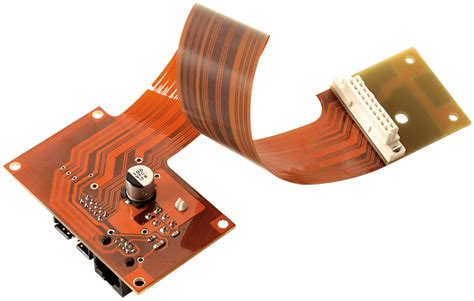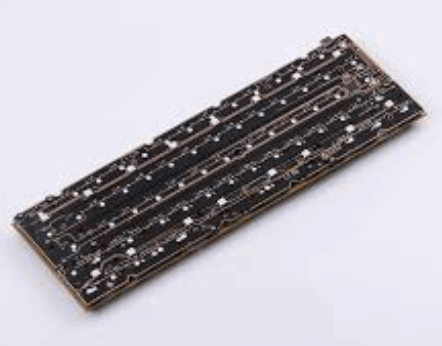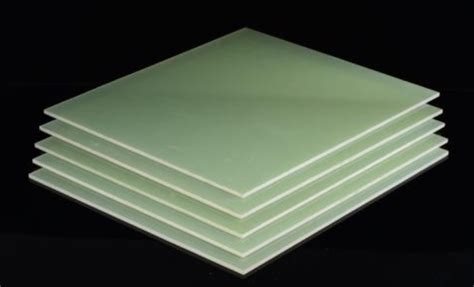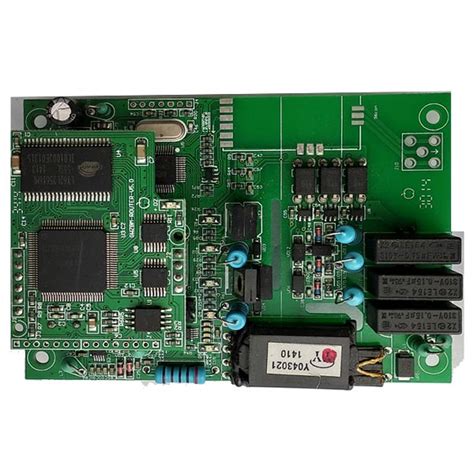Flex cut pcb keyboard
Understanding the Benefits of Flex Cut PCB Keyboards
Flex cut PCB keyboards have emerged as a significant innovation in the realm of mechanical keyboards, offering a range of benefits that cater to both casual users and enthusiasts alike. To understand the advantages of these keyboards, it is essential to first grasp the concept of a flex cut PCB. Essentially, a flex cut PCB is a printed circuit board that has been designed with strategic cuts or grooves, allowing for increased flexibility and enhanced typing dynamics. This design is particularly beneficial in providing a more comfortable and responsive typing experience, which is a primary consideration for many keyboard users.
One of the most notable benefits of flex cut PCB keyboards is their ability to offer a softer and more cushioned typing feel.
Traditional PCBs are rigid, which can lead to a harsher typing experience, especially during prolonged use. In contrast, the flex cuts in these specialized PCBs allow for a slight bending or flexing of the board when keys are pressed. This flexibility absorbs some of the force exerted during typing, resulting in a gentler impact on the fingers and reducing the risk of fatigue. Consequently, users who spend extended periods typing can benefit from the ergonomic advantages provided by flex cut PCB keyboards.
Moreover, the increased flexibility of these keyboards can also contribute to improved acoustics.
The flex cuts can help dampen the sound produced when keys are pressed, leading to a quieter typing experience. This is particularly advantageous in environments where noise reduction is important, such as shared workspaces or during late-night typing sessions. The ability to maintain a quieter profile without sacrificing performance is a compelling feature for many users.
In addition to comfort and acoustics, flex cut PCB keyboards can enhance the overall typing performance.
The flexibility of the PCB allows for a more even distribution of force across the keyboard, which can lead to more consistent key actuation. This consistency is crucial for typists who require precision and reliability, such as gamers or professionals who rely on fast and accurate typing. The even force distribution can also contribute to the longevity of the keyboard, as it reduces the wear and tear on individual keys, thereby extending the lifespan of the device.
Furthermore, the design of flex cut PCBs can offer customization opportunities that appeal to keyboard enthusiasts.
The strategic placement of flex cuts can be tailored to suit individual preferences, allowing users to modify the typing feel to their liking. This level of customization is particularly attractive to those who enjoy personalizing their keyboards to achieve the perfect balance between aesthetics and functionality.
In conclusion, flex cut PCB keyboards present a range of benefits that make them an appealing choice for a diverse array of users. From enhanced comfort and reduced noise to improved performance and customization options, these keyboards address many of the common concerns associated with traditional mechanical keyboards. As the demand for ergonomic and high-performance typing solutions continues to grow, flex cut PCB keyboards are likely to become an increasingly popular option in the market. By understanding the advantages they offer, users can make informed decisions when selecting a keyboard that best meets their needs and preferences.

How Flex Cut PCB Technology Enhances Keyboard Durability
Flex cut PCB technology represents a significant advancement in the design and durability of modern keyboards. As the demand for more resilient and versatile keyboards grows, manufacturers are increasingly turning to innovative solutions like flex cut PCBs to meet consumer expectations. This technology not only enhances the structural integrity of keyboards but also improves their overall performance and longevity.
To understand how flex cut PCB technology enhances keyboard durability, it is essential to first grasp the basic concept of a printed circuit board (PCB).
A PCB is a crucial component in electronic devices, providing the necessary pathways for electrical signals to travel between various components. In traditional keyboards, the PCB is typically a rigid board that can be susceptible to stress and damage over time, especially with frequent use. However, flex cut PCBs introduce a new level of flexibility and resilience.
Flex cut PCBs are designed with strategic cuts and patterns that allow the board to bend and flex without breaking.
This flexibility is particularly beneficial in keyboards, where repeated keystrokes and pressure can lead to wear and tear. By incorporating flex cuts, the PCB can absorb and distribute mechanical stress more evenly, reducing the likelihood of cracks or breaks. Consequently, this design innovation significantly extends the lifespan of the keyboard, making it a more durable option for users who require reliable performance over extended periods.
Moreover, the enhanced flexibility of flex cut PCBs contributes to improved shock absorption.
In scenarios where a keyboard might be accidentally dropped or subjected to sudden impacts, the flex cut design helps to mitigate potential damage. The ability of the PCB to flex and absorb shock reduces the risk of internal components becoming dislodged or damaged, thereby maintaining the keyboard’s functionality and reliability.
In addition to durability, flex cut PCB technology also offers benefits in terms of keyboard design and ergonomics.
The flexibility of the PCB allows for more creative and ergonomic keyboard layouts, catering to the diverse needs of users. For instance, manufacturers can design keyboards with curved or contoured shapes that better fit the natural positioning of the hands and fingers. This not only enhances user comfort but also reduces the risk of repetitive strain injuries, making flex cut PCBs an attractive option for ergonomic keyboard designs.
Furthermore, the integration of flex cut PCBs can lead to more compact and lightweight keyboard designs.
By reducing the need for additional support structures typically required for rigid PCBs, manufacturers can create sleeker and more portable keyboards. This is particularly advantageous for users who prioritize mobility and convenience, such as gamers and professionals who frequently travel.
In conclusion, flex cut PCB technology represents a transformative development in the realm of keyboard manufacturing. By enhancing durability through increased flexibility and shock absorption, this technology addresses common issues associated with traditional keyboard designs. Additionally, the potential for innovative and ergonomic layouts, coupled with the benefits of compactness and portability, makes flex cut PCBs a compelling choice for modern keyboard designs. As the technology continues to evolve, it is likely that we will see even more applications and improvements, further solidifying its role in the future of keyboard durability and design.

A Guide to Choosing the Right Flex Cut PCB Keyboard for Your Needs
When selecting a flex cut PCB keyboard, understanding the nuances of this technology is crucial to making an informed decision. Flex cut PCBs, or printed circuit boards, are designed with strategic cuts that enhance the flexibility of the keyboard, providing a more comfortable and responsive typing experience. This innovative design is particularly beneficial for users who spend extended periods typing, as it reduces strain on the fingers and wrists. As you consider your options, it is important to evaluate several key factors to ensure that the keyboard you choose aligns with your specific needs and preferences.
First and foremost, consider the layout and size of the keyboard.
Flex cut PCB keyboards come in various configurations, from full-sized models with a numeric keypad to more compact versions that save desk space. Your choice should reflect your typical usage patterns. For instance, if you frequently input numerical data, a full-sized keyboard might be more suitable. Conversely, if portability and space-saving are priorities, a tenkeyless or 60% keyboard could be more appropriate. Additionally, the layout should be intuitive and comfortable for your typing style, minimizing the learning curve and enhancing productivity.
Another critical aspect to consider is the type of switches used in the keyboard.
Mechanical switches are a popular choice for flex cut PCB keyboards due to their durability and tactile feedback. However, within the realm of mechanical switches, there are numerous options, each offering a distinct typing experience. Linear switches provide a smooth keystroke without tactile feedback, making them ideal for fast typists. Tactile switches offer a noticeable bump at the actuation point, which can aid in typing accuracy. Clicky switches, on the other hand, provide both tactile feedback and an audible click, which some users find satisfying. Understanding the differences between these switch types will help you select a keyboard that complements your typing habits.
In addition to the physical attributes of the keyboard, consider the customization options available.
Many flex cut PCB keyboards offer programmable keys, allowing you to tailor the keyboard to your workflow. This feature can significantly enhance efficiency, particularly for users who rely on specific key combinations or macros. Furthermore, customizable RGB lighting can add a personal touch to your setup, although it is more of an aesthetic consideration than a functional one.
Durability and build quality are also paramount when choosing a flex cut PCB keyboard.
A well-constructed keyboard will withstand the rigors of daily use and provide a consistent typing experience over time. Look for keyboards made from high-quality materials, such as aluminum or reinforced plastic, which offer a balance of sturdiness and weight. Additionally, consider the reputation of the manufacturer and read reviews from other users to gauge the reliability of the keyboard.
Finally, budget constraints will inevitably play a role in your decision-making process.
While it may be tempting to opt for the most affordable option, investing in a higher-quality keyboard can pay dividends in terms of comfort and longevity. Consider the features that are most important to you and weigh them against the cost to find a keyboard that offers the best value for your needs.
In conclusion, choosing the right flex cut PCB keyboard involves a careful assessment of various factors, including layout, switch type, customization options, build quality, and budget. By taking the time to evaluate these elements, you can select a keyboard that not only meets your functional requirements but also enhances your overall typing experience.

The Future of Keyboard Design: Innovations in Flex Cut PCB Technology
In the ever-evolving landscape of technology, the design and functionality of keyboards have seen significant advancements, with flex cut PCB technology emerging as a notable innovation. This technology, which involves the strategic cutting of printed circuit boards (PCBs) to enhance flexibility, is poised to redefine the future of keyboard design. As we delve into the intricacies of this development, it is essential to understand the underlying principles and potential implications for both manufacturers and end-users.
Flex cut PCB technology is primarily characterized by its ability to introduce a new level of adaptability and comfort to keyboard designs.
Traditional keyboards, often rigid and inflexible, can lead to discomfort during prolonged use. However, by incorporating flex cuts into the PCB, manufacturers can create keyboards that offer a more ergonomic experience. This is achieved by allowing the keyboard to flex and conform to the natural curvature of the user’s hands, thereby reducing strain and enhancing comfort. Consequently, this innovation holds significant promise for improving user experience, particularly for individuals who spend extended periods typing.
Moreover, the implementation of flex cut PCB technology is not limited to ergonomic benefits alone.
It also opens up new possibilities in terms of design aesthetics and customization. With the ability to bend and shape the PCB, designers can explore unconventional keyboard layouts and forms that were previously unattainable. This flexibility allows for the creation of sleek, modern designs that cater to the diverse preferences of consumers. Additionally, the potential for customization is vast, as users can personalize their keyboards to better suit their individual needs and style preferences.
Transitioning from design to functionality, flex cut PCB technology also offers advantages in terms of durability and resilience.
The strategic cuts in the PCB not only provide flexibility but also contribute to the overall robustness of the keyboard. By distributing stress more evenly across the board, these cuts can help prevent damage from accidental drops or impacts. This enhanced durability is particularly beneficial in environments where keyboards are subject to heavy use or potential mishandling, such as in gaming or industrial settings.
Furthermore, the integration of flex cut PCB technology aligns with the growing trend towards sustainability in electronic manufacturing.
By optimizing the use of materials and reducing waste, this technology supports more environmentally friendly production processes. As consumers become increasingly conscious of the environmental impact of their purchases, the adoption of sustainable practices in keyboard manufacturing could serve as a significant selling point.
In conclusion, the advent of flex cut PCB technology represents a pivotal moment in the evolution of keyboard design. By offering improved ergonomics, expanded design possibilities, enhanced durability, and sustainable manufacturing practices, this innovation addresses several key challenges faced by traditional keyboards. As manufacturers continue to explore and refine this technology, it is likely that we will witness a new era of keyboard designs that prioritize user comfort, aesthetic appeal, and environmental responsibility. As such, flex cut PCB technology not only signifies a technological advancement but also a shift towards a more user-centric and sustainable future in keyboard manufacturing.






